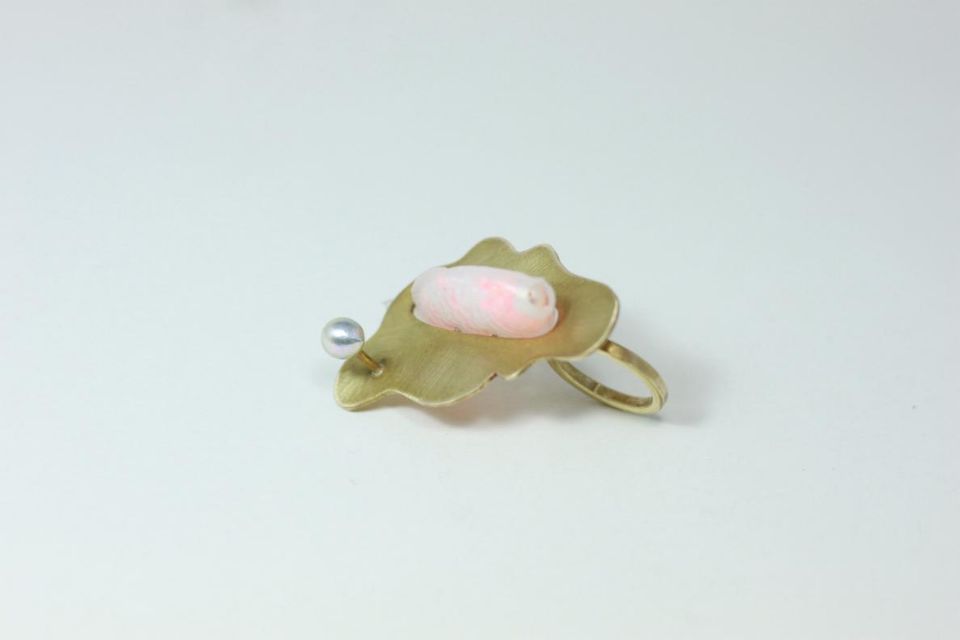From Unwanted into a Ring.
A precious pearl accompanies the plastic fish. Designers world-wide have come up with different ideas in combining ‘trash’ and ‘treasures’, among them professional jewelry designers as well as self-taught artisans. They creatively use trash as a resource for transforming something seemingly valueless and discarded by others into jewelry, a kind of object that is usually associated with wealth and status and – if given as a gift or heirloom – carries strong emotional implications.
Cissy Chan’s ring is a good example of jewelry that challenges value systems as it combines a “useless” fish-shaped container of little to no value with a pearl, a semi-precious object of relatively high value. A pearl is formed by a mollusk when a particle, for example a corn of sand, or a microorganism enters a particular kind of oyster, mussel or clam. The mollusk then coats the irritant with the matter that – layer upon layer – will grow into a lustrous pearl. In other words, before pearls become valuable materials used in jewelry making, they are formed around unwanted substances. In this sense, their creation is comparable to the way in which the organically shaped brass frame that surrounds Cissy Chan’s plastic fish transforms an unwanted object into a ring.
